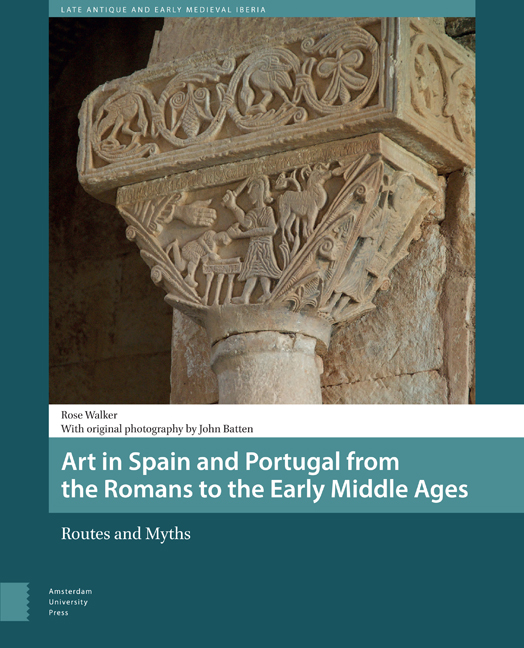Book contents
- Frontmatter
- Contents
- List of Illustrations
- Acknowledgements
- Conventions
- Abbreviations
- Introduction
- 1 The Lie of the Land: Art and Architecture Along the Roman Roads
- 2 Believing and Belonging: Late Antiquity and the Wider Mediterranean
- 3 The Visigothic Period: Fragmentation and Accretion
- 4 The Eighth and Ninth Centuries: Re-emergence and Invention
- 5 The Great Tenth Century
- 6 Dispersal After the Fall of the Caliphate
- 7 Trading Peace, Gold and Expertise, c. 1050-c. 1075
- 8 The Making of Romanesque: Reform and Synergy
- Epilogue
- Chronology 700-1100
- Bibliography of Cited Sources
- Index
6 - Dispersal After the Fall of the Caliphate
Published online by Cambridge University Press: 12 February 2021
- Frontmatter
- Contents
- List of Illustrations
- Acknowledgements
- Conventions
- Abbreviations
- Introduction
- 1 The Lie of the Land: Art and Architecture Along the Roman Roads
- 2 Believing and Belonging: Late Antiquity and the Wider Mediterranean
- 3 The Visigothic Period: Fragmentation and Accretion
- 4 The Eighth and Ninth Centuries: Re-emergence and Invention
- 5 The Great Tenth Century
- 6 Dispersal After the Fall of the Caliphate
- 7 Trading Peace, Gold and Expertise, c. 1050-c. 1075
- 8 The Making of Romanesque: Reform and Synergy
- Epilogue
- Chronology 700-1100
- Bibliography of Cited Sources
- Index
Summary
In 1003 Ramon Borrell, count of Barcelona, raided the Muslim city of Balaguer, northeast of Zaragoza. In response ‛Abd al-Malik, son of al-Mansur, left Córdoba on campaign. Ibn Idhārī said that ‘he departed through the Gate of Victory, the eastern gate of the gates of Madīnat al-Zāhira … in a new coat of mail and an octagonal iron helmet shining with gilding’. His army rode through Toledo, Guadalajara, and at Medinaceli met up with additional forces supplied by León and Castile in accordance with a treaty of mutual defence. They headed towards Montserrat and Manresa in the lands of Ramon Borrell. Roundly defeated, the count of Barcelona had to send ambassadors to Córdoba to sign a peace treaty and to negotiate the release of numerous captives. This truce with León came to an abrupt end in 1005, when ‛Abd al-Malik and his general, Wadih, from the Middle March around Toledo, brutally attacked the city of Zamora on the river Duero. Many inhabitants were killed or captured, and buildings not already in ruins from the raids of al- Mansur were burnt or destroyed. The following year ‛Abd al-Malik went to Zaragoza, Huesca, and Barbastro to establish a base for raiding north into the foothills of the Pyrenees. Pamplona seems to have escaped attack, perhaps because, as the home of ‛Abda, the mother of al-Malik's half-brother, it maintained a political link with Córdoba. The county of Castile had also enjoyed two years of relative peace, but in 1007 it was the focus of ‛Abd al-Malik's annual campaign. The usual defeat followed, and ‛Abd al-Malik seized the town and fortress of Clunia above the river Duero. In recognition the caliph gave him the title of al-Muzaffar, ‘the Victorious’.
Art Under ‛Abd al-Malik
Art in the first decade of the eleventh century celebrates the confident and victorious rule of ‛Abd al-Malik. The largest and most extravagantly decorated of the ivories from al-Andalus was made for him c. 1004-1005 (fig. 95). The imagery is traditional and caliphal. Twenty-one eight-lobed medallions encircle varied scenes: peacocks, lions attacking deer, courtly leisure pursuits, hunting, falconry, and especially musicians, as well as a formal image of the bearded caliph.
- Type
- Chapter
- Information
- Art in Spain and Portugal from the Romans to the Early Middle AgesRoutes and Myths, pp. 235 - 274Publisher: Amsterdam University PressPrint publication year: 2016



